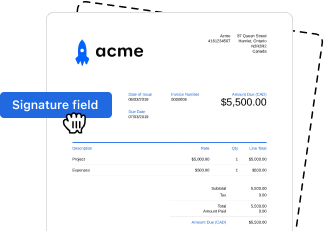Unlock eSignature Legitimacy for Drug Testing Consent Agreement in European Union
- Quick to start
- Easy-to-use
- 24/7 support
Simplified document journeys for small teams and individuals




We spread the word about digital transformation
Why choose airSlate SignNow
-
Free 7-day trial. Choose the plan you need and try it risk-free.
-
Honest pricing for full-featured plans. airSlate SignNow offers subscription plans with no overages or hidden fees at renewal.
-
Enterprise-grade security. airSlate SignNow helps you comply with global security standards.







Your complete how-to guide - e signature legitimacy for drug testing consent agreement in european union
eSignature Legitimacy for Drug Testing Consent Agreement in European Union
In the European Union, ensuring the legitimacy of eSignatures on important documents like Drug Testing Consent Agreements is crucial. With airSlate SignNow, you can easily streamline this process and enhance efficiency. Here is a step-by-step guide on how to use airSlate SignNow for signing documents with eSignatures.
User Flow:
- Launch the airSlate SignNow web page in your browser.
- Sign up for a free trial or log in.
- Upload a document you want to sign or send for signing.
- If you're going to reuse your document later, turn it into a template.
- Open your file and make edits: add fillable fields or insert information.
- Sign your document and add signature fields for the recipients.
- Click Continue to set up and send an eSignature invite.
airSlate SignNow is a reliable solution that empowers businesses to securely send and eSign documents. It offers a great ROI with a rich feature set, perfect for SMBs and Mid-Market. Additionally, its transparent pricing ensures no hidden support fees or add-on costs. With superior 24/7 support included in all paid plans, airSlate SignNow is the ideal choice for organizations looking for an easy-to-use and cost-effective eSignature solution.
Experience the benefits of airSlate SignNow and streamline your document signing process today!
How it works
Rate your experience
What is the e signature legitimacy for drug testing consent agreement in european union
The e signature legitimacy for drug testing consent agreements in the European Union refers to the legal acceptance of electronic signatures in the context of agreements that grant permission for drug testing. These agreements are crucial for ensuring that individuals understand and consent to the testing process. In the EU, electronic signatures are governed by the eIDAS Regulation, which establishes a framework for their legal validity. This means that an eSignature can hold the same legal weight as a handwritten signature, provided it meets specific criteria for authenticity and integrity.
How to use the e signature legitimacy for drug testing consent agreement in european union
Using the e signature legitimacy for drug testing consent agreements involves several straightforward steps. First, the document must be prepared and made accessible to the signers. With airSlate SignNow, users can easily upload the consent agreement and add fields for signatures, dates, and any other necessary information. Once the document is ready, it can be sent to the relevant parties for their eSignatures. After all signatures are collected, the completed document can be securely stored or shared as needed, ensuring compliance with legal standards.
Steps to complete the e signature legitimacy for drug testing consent agreement in european union
Completing the e signature legitimacy for drug testing consent agreements can be done efficiently through airSlate SignNow. The following steps outline the process:
- Upload the document: Begin by uploading the drug testing consent agreement to the airSlate SignNow platform.
- Add signature fields: Designate where each signer should provide their eSignature, along with any additional required information.
- Send for signature: Distribute the document to the relevant parties via email or direct link for their signatures.
- Collect signatures: Monitor the status of the document to ensure all parties have signed.
- Store securely: Once completed, save the signed document in a secure location for future reference.
Legal use of the e signature legitimacy for drug testing consent agreement in european union
The legal use of e signatures for drug testing consent agreements in the EU is supported by the eIDAS Regulation, which recognizes electronic signatures as legally binding. To ensure compliance, the eSignature must be created using a secure method that verifies the identity of the signer. This includes using advanced electronic signatures, which require a qualified certificate. By following these legal guidelines, organizations can confidently use eSignatures in their drug testing processes, knowing that they are valid and enforceable.
Key elements of the e signature legitimacy for drug testing consent agreement in european union
Several key elements contribute to the legitimacy of e signatures in drug testing consent agreements. These include:
- Intent to sign: The signer must clearly demonstrate their intention to agree to the terms of the document.
- Identity verification: The process must include measures to verify the identity of the signer, ensuring that they are who they claim to be.
- Integrity of the document: The document must remain unchanged after signing, which is typically ensured through cryptographic methods.
- Audit trail: A record of the signing process should be maintained, providing proof of when and how the signatures were obtained.
Security & Compliance Guidelines
Ensuring security and compliance when using e signatures for drug testing consent agreements is essential. Organizations should implement the following guidelines:
- Use secure platforms: Choose a reputable eSignature service like airSlate SignNow that complies with industry standards and regulations.
- Implement access controls: Limit access to sensitive documents to authorized personnel only.
- Regular audits: Conduct periodic audits of eSignature processes to ensure compliance with legal requirements.
- Data encryption: Utilize strong encryption methods to protect documents during transmission and storage.
-
Best ROI. Our customers achieve an average 7x ROI within the first six months.
-
Scales with your use cases. From SMBs to mid-market, airSlate SignNow delivers results for businesses of all sizes.
-
Intuitive UI and API. Sign and send documents from your apps in minutes.
FAQs
-
What is the e signature legitimacy for drug testing consent agreement in European Union?
The e signature legitimacy for drug testing consent agreement in European Union refers to the legal acceptance of electronic signatures in the context of drug testing consent forms. Under EU regulations, electronic signatures are recognized as valid and enforceable, provided they meet specific criteria. This ensures that businesses can securely obtain consent for drug testing using e signatures.
-
How does airSlate SignNow ensure e signature legitimacy for drug testing consent agreements?
airSlate SignNow ensures e signature legitimacy for drug testing consent agreements by adhering to EU regulations and employing advanced security measures. Our platform uses encryption and authentication processes to verify the identity of signers, ensuring that all signatures are legally binding. This compliance gives businesses peace of mind when managing consent agreements.
-
What features does airSlate SignNow offer for managing drug testing consent agreements?
airSlate SignNow offers a range of features for managing drug testing consent agreements, including customizable templates, automated workflows, and real-time tracking of document status. These features streamline the process of obtaining e signatures, making it easier for businesses to comply with legal requirements. Additionally, our platform integrates seamlessly with other tools to enhance productivity.
-
Is airSlate SignNow cost-effective for businesses needing e signatures?
Yes, airSlate SignNow is a cost-effective solution for businesses needing e signatures, including for drug testing consent agreements. Our pricing plans are designed to accommodate various business sizes and needs, ensuring that you only pay for what you use. This affordability, combined with our robust features, makes it an ideal choice for organizations looking to streamline their document processes.
-
Can airSlate SignNow integrate with other software for drug testing consent management?
Absolutely! airSlate SignNow offers integrations with various software applications, enhancing the management of drug testing consent agreements. Whether you use CRM systems, HR platforms, or other document management tools, our integrations allow for seamless workflows and data transfer. This connectivity ensures that your e signature processes are efficient and effective.
-
What are the benefits of using e signatures for drug testing consent agreements?
Using e signatures for drug testing consent agreements provides numerous benefits, including increased efficiency, reduced paperwork, and enhanced security. With airSlate SignNow, businesses can obtain consent quickly and securely, minimizing delays in the testing process. Additionally, e signatures help maintain compliance with legal standards, ensuring the legitimacy of the agreements.
-
How secure is the e signature process with airSlate SignNow?
The e signature process with airSlate SignNow is highly secure, utilizing advanced encryption and authentication methods to protect sensitive information. Our platform complies with EU regulations regarding e signature legitimacy for drug testing consent agreements, ensuring that all transactions are safe and legally binding. This commitment to security helps businesses maintain trust with their clients and employees.
Related searches to e signature legitimacy for drug testing consent agreement in european union
Join over 28 million airSlate SignNow users
Get more for e signature legitimacy for drug testing consent agreement in european union
- Explore Online Signature: how to create my signature
- Try Seamless eSignatures: how to create a signature ...
- Try Seamless eSignatures: how to create your signature ...
- Find All You Need to Know: how to delete electronic ...
- Explore Your Digital Signature – Questions Answered: ...
- Explore Your Digital Signature – Questions Answered: ...
- Streamline Your Contract Lifecycle: how to digitally ...
- Explore Your Digital Signature – Questions Answered: ...




























